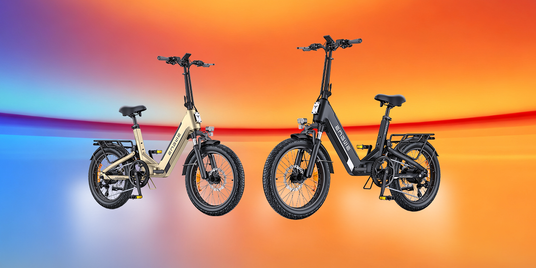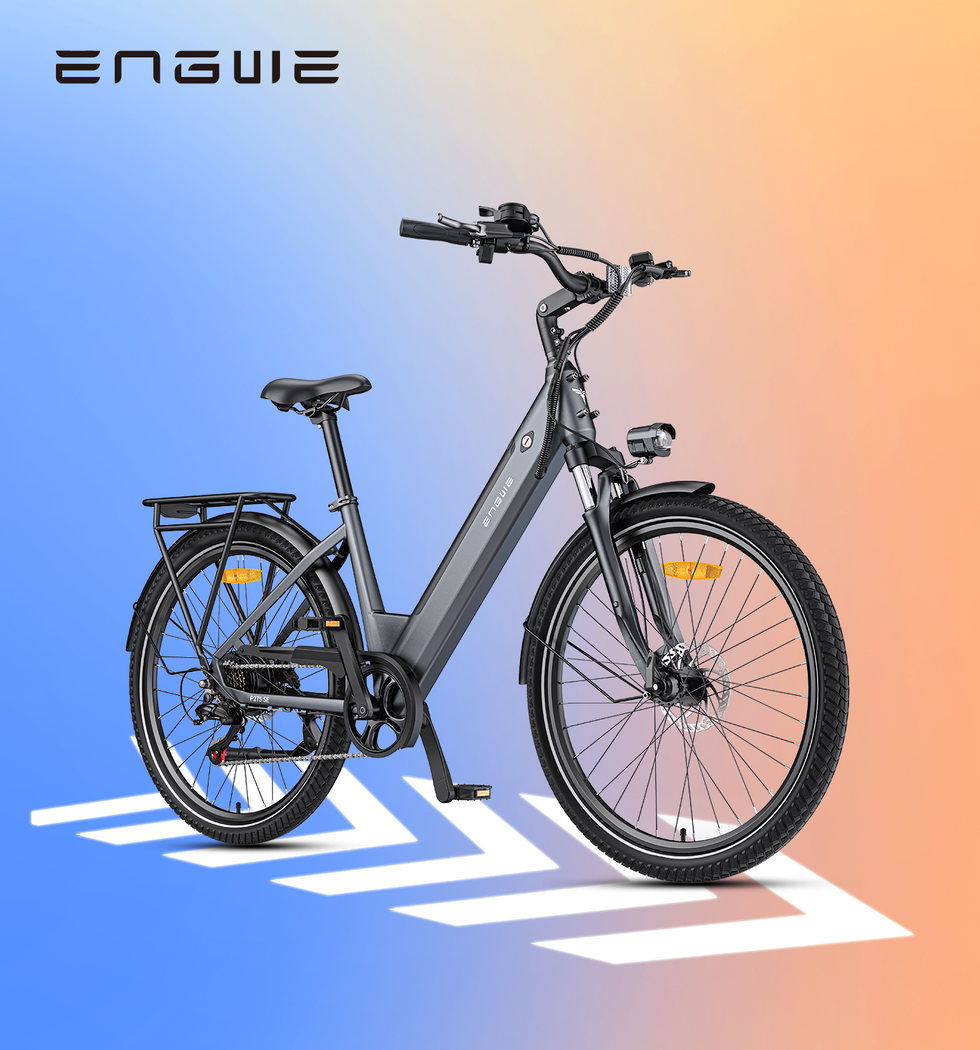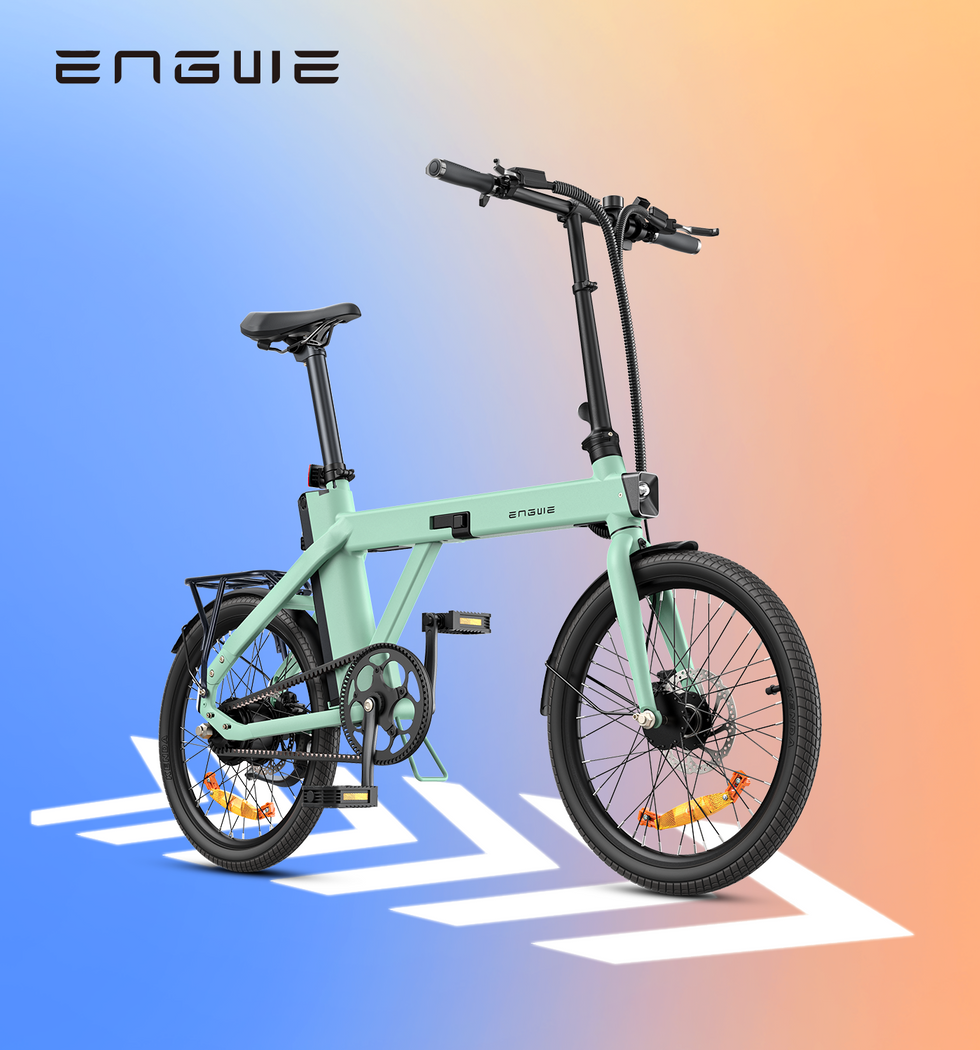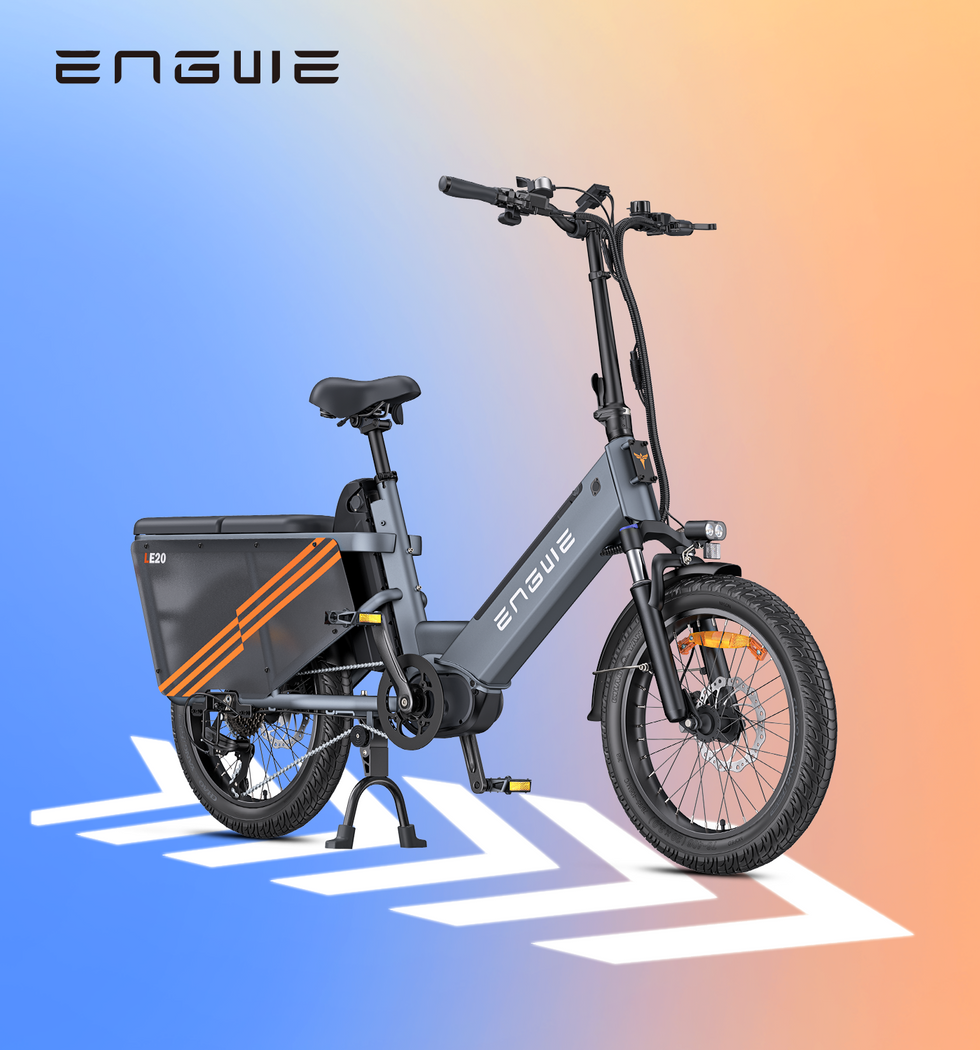In 2025, electric bicycles will no longer just be toys, but more of practical tools for work, play, or even carrying the family around. For many households, this has opened a question: Should I buy an e-bike factory-made, or use an electric bike conversion kit on my existing bicycle? That's what current riders are thinking about now.
The article discusses the best e-bike conversion kits having batteries in 2025 and touches on their pros and cons. It then goes on to analyze why most of the time, it is much smarter to go with a built e-bike, especially from ENGWE, as it gives a better deal in value, reliability, and long-term satisfaction.
Conversion Kits: The Best Ones in 2025
Current conversion kits range from very simple hub motors to advanced mid-drive systems having torque sensors. The choice of which system best suits you depends on what type of rider you are, the terrain, and how much mechanical confidence you possess, as well as the performance you expect from a conversion kit.
Swytch – Quick and Portable

Swytch continues to set the pace in the commuter market by providing a solution that emphasizes straightforwardness and portability. The design philosophy of the entire electrification process is to ensure that anyone can make it happen, regardless of their technical skills. All a rider would then need to do is replace the front wheel with one having a motorized hub and attach a mini battery to the handlebars.
These latest versions-especially the Max and Max++ packs-greatly increase range capabilities. These small-but-mighty batteries can deliver up to sixty miles per charge, showing development from the lithium-ion technology of today. Within city infrastructure, this presents freedom and makes cycling a straightforward part of daily life.
One major benefit is that it is reversible. Unlike mid-drive kits that modify the frame permanently, the Swytch can be removed in minutes, converting the bike back to its original state. For renters, students, or those sharing a bike, this flexibility is unmatched.
Bafang BBS02B – Muscle for the Climbers

Bafang BBS02B is a brute for users who want to take long, steep climbs or have heavy loads on the cycle. Umph mainly makes use of bottom bracket replacement and directly drives the crank, thus making it superior for climbing, compared to the average hub motor. The gears allow it to relay motor torque across increasing gradients without degrading power efficiency or wasting it.
Bafang is popular because of its raw output. It is engineered to be very powerful at 750W and gives the most thrilling acceleration while climbing even the hardest peaks, where a hub motor would just quit. Paired with 48V batteries, usually of up to 20Ah, it will go very far to support long-distance adventures in an appropriate way.
But cons exist. Compared with only changing out a wheel, it is far more complicated. Requiring a lot of skills and a few special tools, this is the installation of a much more difficult kind. And indeed, while there may be some places where power ratings comply with the law, many countries find this device in breach of requirements for being too powerful for road use, quite limiting to private land or off-road applications. Strength has a fan base, but it may put casual riders off since they could find it too relentless and risky.
Tongsheng TSDZ2B – Natural Power Delivery

It is around halfway between performance and sophistication. Rather than being cadence-based with varying degrees of assistance only while the pedals turn, this kit uses a torque sensor. The harder the rider pedals, the more assistance it gives. This yields the kinds of "feel" premium e-bikes boast.
That makes it more natural to get out on long rides, which don't feel like torture. It also keeps that wonderful feeling of connection between rider and machine. The TSDZ2B is often sold with batteries and chargers, neatly bundled with the unit. Different configurations exist, with 36V and 48V battery options.
Most of these types tend to be fitness riders. They want a motor to give them assistance but still want that genuine feel of cycling exertion. Like the Bafang, it requires bottom bracket removal for installation, which can be daunting for novices; however, this is a significant payoff in ride quality.
Rubbee X – Simplicity Above All

Simplicity, the Rubbee way, relies more on a method other than integrating into a bike's drivetrain or wheels. It is clipped to the seat post of the bike and drives the rear wheel using a roller pressed against the bicycle tire. This friction-drive system allows installation in seconds, making it a favorite for riders who want zero mechanical complications.
Modular design means that a rider can customize their range by adding or removing battery cartridges. It's attractive, especially for city dwellers, who might only need a short boost during the week but want to put some extra capacity into the mix for the weekends.
The efficiency drawback occurs, as friction drives are much less effective than hub or mid-drive motors, especially in wet weather, when slippage would not be an uncommon phenomenon. Yet casual cyclists and families with multiple users, all with different bicycles, make the Rubbee X a basic solution.
YOSE Power Kit - Affordable Entry Point

YOSE Power is now an inexpensive gateway to e-biking. Hub motor kits come in front or rear-wheel options so that riders can exercise some degree of flexibility depending on their bike type. Batteries are in downtube or rear rack formats, more commonly in the range of 470 to 560Wh.
Being cost-effective and easy to assemble, the kits make for a perfect first DIY for novice builders. These kits don't come with some nuances, such as torque sensors or high-end controllers, but they work well for the most part. For many, the YOSE kits are their entry point into e-biking before deciding to self-upgrade into an actual factory-built bike.
Cytronex C1 - Minimal Performance
The top thirty percent of the conversion scheme is Cytronex C1. Here you have a kit intended for the road cyclist on a gravel grinder who appreciates subtle and light construction. The front hub coordinates a neat tuck for the motor, whereas the battery serves as a minor inconvenience to the weight of the water bottle.
Battery with a meek 180Wh, however, does not pretend to substitute any pulling force from the rider; that is absolutely not its calling. The downhill would require light assistance, and flat-out commuting might set in fatigue. The beauty of the Cytronex is that it keeps that lightweight feel and adds performance that is not detrimental to looks.
Considerations for Buying the Appropriate Conversion Kit
The choice of conversion will depend on how easy, powerful, and legally correct a kit is. Before a purchase is finalized, considerations must be given by the rider as to where the motor shall be placed, what type of battery is desired, and, finally, anything pertaining to legislation that might apply.
Motor Placement
Front-hub motors provided by Swytch and Cytronex are simple enough to place and best suited for an inexperienced contractor. Rear-hub kits like YOSE would allow for better balance and traction, but would be more challenging to install. Then we come to mid-drives such as Bafang and Tongsheng, which offer the utmost in a powerful riding experience, especially on hills, while demanding technical know-how, and all too often trespassing legal limits.
Battery Placement
The battery type affects handling and practicality. In high-end kits, downtube packs hold an appropriate balance between front and rear weight loading. Rear-rack batteries: This is a wider application on step-through bikes and helps to shift some weight behind. Bottle-style packs like the one on the Cytronex allowed for lightweight delivery and maintain a high degree of discretion, while handlebar-mounted packs like Swytch are the other way, simply because they are practically easy for the rider to detach and take in with ease, without inconveniencing anything.

Legal Compliance
What cannot therefore be ignored are the legal issues. Most places in Europe would legally limit e-bikes to a continuous output of 250W with an assisted speed of 25Km/h. Anything above these limits would have the bike reclassified as a moped requiring insurance, a license, and a helmet. Riders drawn in by the unrestricted power of kits such as Bafang should consider the legal implications. Empowered enforcement makes for a calm mind.
Disadvantages of the DIY Conversion
These conversion kits are packed, yet very compromising. They are fast becoming a hindrance in terms of instabilities, safety during installation, support, and legality in the long run.
Safety Concerns
Conventionally, the frame and wheels of a bike would never resist torque from a motor. Therefore, if a motor is added, it might significantly accelerate the wear and stress upon a frame to the verge of its failure. The braking arrangement is never designed for these higher speeds, with little help during emergency stops. E-bikes under production go through extensive testing to withstand these forces, thus providing confidence, which DIY will never give.
Warranty Issues
Factory e-bikes finance a single warranty covering the entire system, with the conversion leaving the liability scattered amongst many suppliers. The motor, battery, and controller would typically have independent warranties, if any. In this situation, pinpointing liability becomes quite complex and frustrating, with a feeling of abandonment for the rider.
The Legal Dangers
Openly breaching every power and speed limit is the real seriousness. The exhilaration in the ride on a converted bike with a 750W motor would definitely become worthy of it, but if that bike is technically a moped, the rider could meet some fees, insurance obligations, or legal actions following an accident, all probably not worth it for most commuters.
Actual Cost Factors
From first glance, the conversion kits might seem cheap; however, costs oftentimes skyrocket. It encompasses brake upgrades, strengthening the wheels, and professional installation. The riders may then have spent about the same-if not more-than a factory-built e-bike, being consoled by no integration or support.
Restrictions on Ride Quality
Ride refinement would mostly be lacking even for some of the best kits available, as compared to a proper factory-built e-bike. Production line makes brag. Its torque sensors are precisely tuned, seamlessly controlling the drivetrain that matches the power of the motor. Thus, even in good e-bikes, one can easily find smooth acceleration, inaudible operation, and almost intuitive assistance. But conversion kits hardly feel refined.
Why Factory E-Bikes Are Smarter

For most riders, factory e-bikes offer some advantages compared to conversions that are mostly impossible to replicate.
Legal Peace of Mind
Ready-made e-bikes are in compliance with local regulations from day one. Riders can use them without any concerns on public roads, thus avoiding the long compliance and registration hurdles.
Built-In Safety
Every part of a production e-bike is so designed with motor power in mind: frames are reinforced, brakes are matched to higher speeds, and electronics are tested for heat management. Systems designed holistically deliver benefits to riders, rather than being cobbled together.
Simplified Warranty and Support
Instead of dealing with multiple suppliers for warranty and support, riders are able to refer to just one for help. This simplifies maintenance and troubleshooting, especially for commuters relying on reliability.
Ride Refinement
Factory bikes offer refined integration: natural-response torque sensors, smooth-power controllers, and drive trains tuned to efficiency. They result in a complete, quiet, and enjoyable ride experience.
Why ENGWE Shines in 2025

Among factory e-bike brands, in 2025, ENGWE has laid claim to one of the most compelling choices, granting serious performance without pricing excess.
Global Reach and Recognition
ENGWE's global visibility has been enhanced by attending major trade shows such as CES 2025 and expanding its support networks in Europe, the UK, and the USA. This translates to greater access for riders to parts, service, and after-sales support.
Performance at Competitive Prices
ENGWE bikes are especially well known for combining large-capacity batteries and torque-sensing systems at reasonable prices. By designing bicycles emphasizing genuine-day usability in commuting, folding, or adventure use, the brand keeps its pricing reasonable.
Example: The Engine Pro 2.0
Here is a perfect example of ENGWE's approach: Engine Pro 2.0. Despite being a folding bike, it boasts a powerful 52V 16Ah battery, torque-sensing pedal assist, and fully equipped suspension for plush riding. The rider of such a machine gains the portability of a commuter bike while not sacrificing the range or strength of larger machines. For many, it is that very sweet spot between utility and performance.
ENGWE L20
With those traits, an ENGWE L20 will be an ideal step-through frame, wide saddle, and practical loads for comfort within. It simmers under a considerable load of fat tires and a powerful engine, ensuring a steady ride across rough paths. The design is so accessible that it suits everyone-from an occasional rider to a shopper to a weekend explorer.
ENGWE X26/X24/X20
A refined city commuter, the ENGWE X26/X24/X20 balances comfort and performance with its lightweight frame, front suspension, and long-lasting battery. Designed for daily rides, it offers smooth handling and dependable speed, making it a stylish solution for urban professionals.
Conclusion: The Smarter Buy
For tinkerers or anyone breathing life into an old bike, conversion kits give much allure and freedom. Swytch, Bafang, and Tongsheng address different needs; Rubbee, YOSE, and Cytronex offer some degree of convenience or affordability or just outright stealth. Tugging on such dreams from morning till dusk, yet the disappointments and hidden costs of conversions from real-world experiences often outweigh the initial advantages for commuters, that is, for all those who ride their bikes as a life support system.



